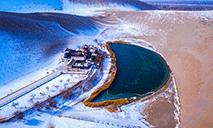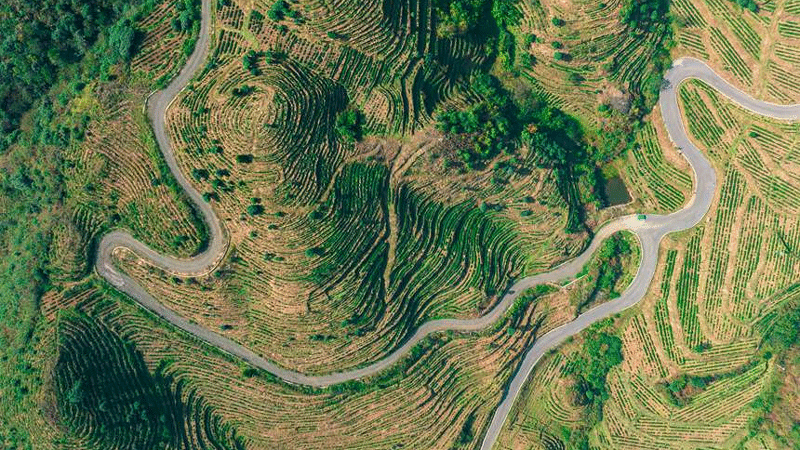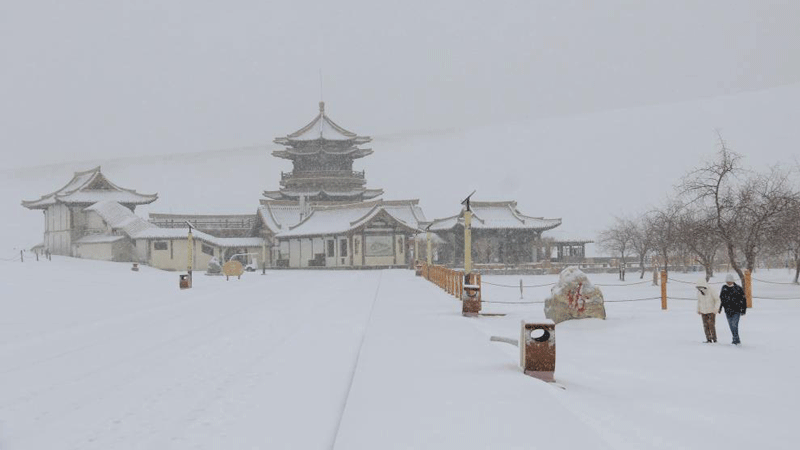奶茶妹妹招助理要求高 懂商务英语好还会修图
This is just one of the countless days in which Mark Pollard has walked into 1 South Park Road, a building full of history both for himself and the discipline of archaeological science. Over 40 years ago, just a few minutes’ walk away from here, Pollard was interviewed and recruited by Professor E.T. Hall as a post-doctoral researcher to join the Research Laboratory for Archaeology and History of Art (RLAHA). Upon his return to Oxford in 2004, it was in this very building that Pollard took over the namesake Chair Professorship from his old advisor and delivered his first lecture. Today, this once alien building is full of familiar faces: his colleagues, friends, students, and students of his students. They have all came here for one reason: his retirement.

Mark Pollard
As the Emeritus Professor of Archaeological Science at the University of Oxford, Pollard’s connection with China runs as deep as with the subject itself. Since his first trip to Shanghai in 1982 with the late Professor E.T. Hall for the First International Conference on Ancient Chinese Pottery and Porcelain, he has been an instrumental figure in forging numerous China-UK research partnerships as well as training generations of archaeologists in both countries. In 2014, he became the Principal Investigator in a project that would eventually span the entire Eurasian continent, strengthening the link between China and the UK in both modern and ancient times. Now an encyclopaedic figure in archaeology and a world-renowned scholar, he shares his China story with People’s Daily Online.
A China Obsession
People’s Daily Online: You recently retired as the Edward Hall Professor of Archaeological Science at University of Oxford. Sitting in the same building where you learnt, worked, and taught for many years and looking back at the starting point of your journey into archaeology and China, tell us how it all happened.
Pollard: I think the first thing to say is that I've been very lucky. I've been in the right place at the right time. I started my undergraduate degree in physics in York in 1972, just the summer after going to see the Tutankhamen exhibition at the British Museum. York's an ancient city, one of the Roman capitals. And I volunteered during the summer to excavate with York archaeological trust for a couple of summers and the social life was all I always expected it to be. And so, I was bitten by archaeology.
So, I went straight into a Ph.D. in 1975 and did a Ph.D. for three years on the chemistry and corrosion of the glass in York Minster. And at the end of that I went to a conference, and I met the then director of the Research Laboratory for Archaeology and History of Art in Oxford, who was an amazing man called Teddy Hall - Professor E.T. Hall. He was a big collector of Chinese porcelain. He had a fabulous personal collection of Chinese porcelain. And he was fascinated by Chinese porcelain. He essentially employed me as a postdoc to do some work on the chemistry and provenance and technology of Chinese porcelain. I came down to Oxford in 1978 and started on that, and I've been doing it ever since really, one way or another.
People’s Daily Online: During your post-doctoral study in Oxford, did you get an opportunity to visit China and work on materials there?
Pollard: Teddy Hall had set up contacts with the Victoria and Albert Museum, the Ashmolean Museum, and the British Museum and so I was working on Chinese porcelains largely from UK collections.
In those days, it was much rarer for foreign scholars to go to China. My first visit to China was in 1982. Teddy and I went to the International Conference on Ancient Chinese Pottery and Porcelain, which I think had been organized by the Shanghai Institute of Ceramics, and it was followed by a three-week tour of some of the important kiln sites in southern China. And then in 1985, I went back to the Second International Conference on Ancient Chinese Pottery and Porcelain. This time it was in Beijing. And then we went on a tour of some of the sites around northern China following that.
Going to China in 1982 was probably the most significant event in my life because it gave me an obsession with China, with Chinese history and with a love of China and the Chinese people. And that's been with me ever since.
People’s Daily Online: Could you please go into more detail about your ‘obsession with China’ and share with us the aspects that first attracted you to it?
Pollard: It’s a life changing which was through Teddy Hall being exposed to Chinese ceramics. And there were really two things which astonished me about Chinese ceramics. One is the art, just the sheer beauty of a piece of - if you think of - a Song Dynasty monochrome. It's just perfect. It's perfect in shape. It's perfect in colour.
But as a scientist, the other thing that astonished me about this stuff is how technologically advanced, how technologically skilful it is. So, you know, in 1000 A.D., during the Song Dynasty that the Chinese are firing vessels that the West could only imagine and couldn't compete with until late 18th century. And when you combine that with the aesthetics, that's what sort of blew me away on China.
A Eurasian Partnership
People’s Daily Online: How did your connection with China unfold following your visits to the country in the 1980s?
Pollard: I had those two trips of about a month in 1982 and 1985 and then didn't physically go back. Although I did continue working on Chinese material, I sort of broadened out and so other areas of interest really, and didn't go back again until I came back to Oxford in 2004 and then went to a conference in Beijing. Since then and in the last few years before COVID, I was going to China three times a year, and spending several months in China traveling, visiting museums, and talking to people using the contacts that I had built up, but also primarily as a result of Professor Jessica Rawson's contacts in China.
Since 2014, I went to Peking University to lecture on Archaeological Science. I also went and spent a month teaching and talking to people at the Northwest University in Xi’an.
I've been fortunate in that since coming back to Oxford I've been able to go to China and meet Chinese scholars and have Chinese students and travel all over China. I think I would have been able to get a lot more out of working in China and with China, if I'd have read and spoken Chinese. But I've been very fortunate and it's largely through PhD students like Dr. Rui Wen and Dr. Ruiliang Liu that I've been able to understand Chinese through them and to give lectures in China.
People’s Daily Online: In the past few years, you have been the Principal Investigator of a £2.5 million research partnership that spans the Eurasian continent with China and the UK at its two ends. How did this tremendous project come about?
Pollard: We were very fortunate in 2015 to get funding from the European Research Council for a large project called FLAME, which is an acronym for the FLow of Ancient Metal across Eurasia. It was based in Oxford, but we deliberately looked for regional partners across Eurasia. We partnered with Prof. Jianli Chen at Peking University, Professor Kunlong Chen at University of Science and Technology, Beijing and Prof. Zhengyao Jin at University of Science and Technology of China, Hefei. So, we had at least three main partners in China, but also colleagues in Russia, Mongolia, and Germany.
Apart from just those formal collaborators, we had a whole range, a network of contacts of people that we worked with. Essentially, FLAME was not a unified project. It was a series of relatively discrete projects. Ruiliang Liu and I worked largely in China, Mongolia, and Kazakhstan, partly because that was our main interest, but others worked in Western Europe, the Caucasus, Georgia, and southern Russia.
People’s Daily Online: FLAME aims to explore the connection between the use of metal in material cultures across the whole continent. To many people, there seem to have been far more differences that similarities. Could you share with us some of your findings that shed light on this issue?
Pollard: The FLAME project was very ambitious. It was taking all of Eurasia from Ireland right through to the East Coast of China. And essentially what we're interested in is using this information to reconstruct, if you like, metal circulation systems, which is another way of saying the social organization of a society in how it obtains, makes and uses its metal.
In China, for instance, what we looked at is the boundary between central China and the borderlands, particularly in the first millennium B.C., where you've clearly got metal coming out of China and into these steppe nomad people.
You can see that the typology of the objects that the steppe nomads are using is nothing like the central Chinese typologies. What they seem to have done is taken the metal that they either took in tribute, or exchanged for horses, or took in raids, and then melted it down and used it for their sorts of objects, which tend to be fittings for chariots, horse fittings, personal decoration of sorts that you don't see in central China.
What we were able to demonstrate is that there was trade of metal out of China into the Steppes. But once they get into the Steppes, they were converted into stuff like knives. That's interesting because it shows how you can begin to reconstruct contact between people in the past and how that contact changes that material. The material changes form, but you still get the information out of it.

Mark Pollard
A Common Language
People’s Daily Online: By the end of 2021, you and your colleagues at FLAME managed to organize numerous international conferences and published dozens of research papers in journals such as Nature and Antiquity. What do you think are essential factors in creating a lasting international collaboration such as FLAME?
Pollard: I think the general public in both China and Europe are generally interested in their past, if only you know what happened here 200 years ago or 500 years ago or 1,000 years ago. Archaeology will unite people across borders. I don't speak any Mongolian, but I can go and talk to the professor in Mongolia. And we share a common interest about how we go about taking this information that we recover by. How we go about interpreting that and converting it into what happened in the past. And so, it's a common language.
As a part of the exchange between Oxford and Peking University, I went to lecture on archaeological science. But there was also exchange between one of our Egyptologists in the Ashmolean, John Baines, who went to Peking and lectured on Egyptology for a month. I think there is a very open door to go through. There's no reason why scholars across the world can’t be given introductions to different cultures.
And I think we would very much benefit from that because part of the reason why I think archaeology is so important in China is that it's about identity. It's about who we are, who the Han Chinese are, who the British are.
One of the rationales for learning your own history is that you learn about who you are and who your people are. But if you broaden that and say there's a desperate need in Britain and Europe for understanding China better at the moment and possibly a need in China to understand Europe.
But there's no better way of understanding where a particular people are coming from than by knowing their history and by being able to talk to them about their history. Not only learning your own cultural history is really important, but I think if you want to understand another culture, then learn their cultural history.
People’s Daily Online: You have had a fascinating career and an amazing life journey. Now that you’re retired, what’s next?
Pollard: I'll tell you a little story. When I was interviewed in Oxford for the Edward Hall Professorship, I had the full 12-person interview panel and somebody asked me, Professor Pollard, which would you say is your best academic paper? Perfectly reasonable question. And I said the next one and I haven't changed my opinion. The next thing I write is going to be really important. I just haven't written it yet.
The obsession with China isn't going to go away. I'd like to get back. We've got this project in Dunhuang in Gansu on the chronology of Buddhist cave system and cave temples. I'd like to be able to do some more on that. I'm still completely obsessed by Chinese bronzes and not perhaps in the way that you'd think, but I'm interested in how they actually cast the bronze.
How do you mix the metal to pour into the mould? You've got the furnaces going that are melting metal. How do you mix that metal? What's the recipe? How were they doing this? And I'm interested in how this changed over time.
I shall still be working on Chinese for as long as I can. And hopefully going back to China.
Photos
Related Stories
- Man in N China's Shanxi collects restored porcelain to preserve traditional restoration craft
- Ronnie O'Sullivan: Building a bridge of snooker between China and UK
- Ambassador calls on Chinese, British business communities to further promote cooperation
- Angela Smith: Strengthening Sino-British friendship through football
- Diplomat highlights opportunities for Sino-UK ties
- Lifelike porcelain vegetables, fruits exhibited in China’s Jiangxi
- British young man aspires to become envoy of UK-China friendship
Copyright © 2022 People's Daily Online. All Rights Reserved.









